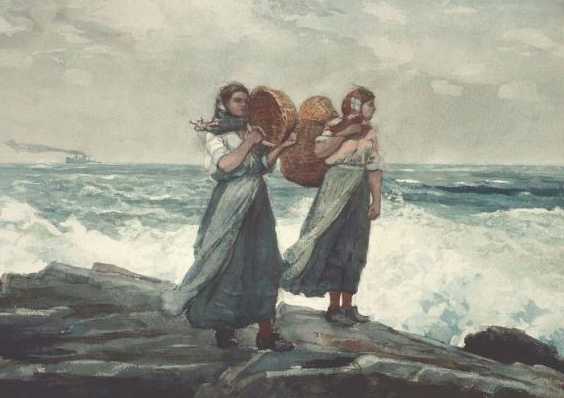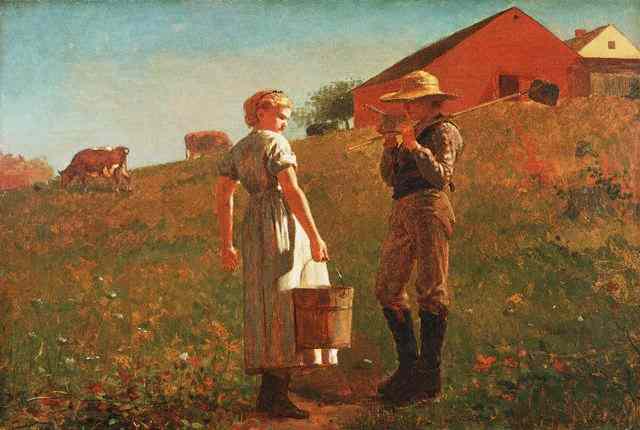Winslow Homer biography
Winslow Homer (1836-1910) is considered as one of the greatest American painters and illustrators of the nineteenth century. His work showed originality and is regarded as the reflection of the true American pioneering spirit. A master in watercolor techniques, his paintings depict human life and nature, especially the seas, in the most genuine and magnificent way. His oils and watercolors are
characterized by their directness, realism, objectivity and splendid color. His powerful and dramatic interpretations of the sea hold a unique place in American art.
Homer was born in Boston, Massachusetts in 1836. At about the age of eighteen he started his career as an apprentice to a lithographer but soon grew tired of this work and he quickly moved on to become a freelance illustrator for magazines such as the Harper's Weekly and Appleton's Journal.
At the outbreak of the Civil war in 1861, he was given the task of portraying the life at the war front. By 1864 he had a good collection of realistic war-time pictures of wounded prisoners and exhausted soldiers and other aspects of the war and military life. Some of his famous paintings from this time are "A Skirmish in the Wilderness", " A Rainy Day in the Camp", "Sunday Morning
in Virginia" and the highly acclaimed "Prisoners at the Front".
Homer spent some time in Paris(1867) and on his return, traveled widely in the United States. He spent 15 years in the United States making trips to places like the White Mountains, the Adirondacks and Gloucester. He produced a brilliant series of works during this time like "Snap the Whip", "Boys in a Pasture", "Croquet Scene" and "Weaning the Calf". The subjects of his paintings were now youthful and light hearted like young women at work or at leisure and children at play. |




